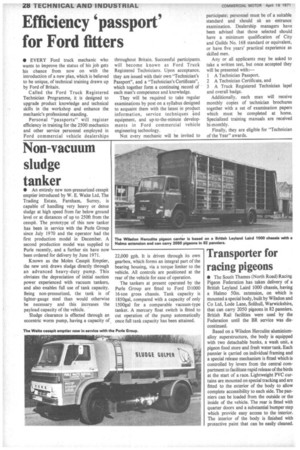Non-vacuum sludge tanker
Page 30

If you've noticed an error in this article please click here to report it so we can fix it.
• An entirely new non-pressurized cesspit emptier introduced by W. E. Waite Ltd, The Trading Estate, Farnham, Surrey, is capable of handling very heavy or dense sludge at high speed from far below ground level or at distances of up to 250ft from the cesspit. The prototype of this new tanker has been in service with the Purle Group since July 1970 and the operator had the first production model in December. A second production model was supplied to Purle recently, and a further six have now been ordered for delivery by June 1971.
Known as the Molex Cesspit Emptier, the new unit draws sludge directly through an advanced heavy-duty pump. This obviates the depreciation of initial suction power experienced with vacuum tankers, and also enables full use of tank capacity. Being non-pressurized, the tank is of lighter-gauge steel than would otherwise be necessary and this increases the payload capacity of the vehicle.
Sludge clearance is effected through an eccentric worm pump, having a capacity of , 22,000 gph. It is driven through its own gearbox, which forms an integral part of the bearing housing, via a torque limiter to the vehicle. All controls are positioned at the rear of the vehicle for ease of operation.
The tankers at present operated by the Purle Group are fitted to Ford D1000 16-ton gross chassis. Tank capacity is 1850gal, compared with a capacity of only 1500gal for a comparable vacuum-type tanker. A mercury float switch is fitted to cut operation of the pump automatically once full tank capacity has been attained.




























































































